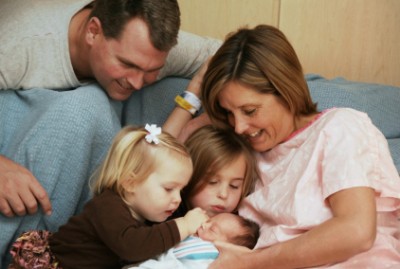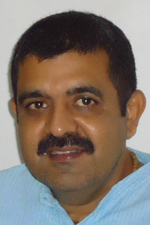
The Ministry of Women and Child Development, so the newspapers say, has recently come out with what it styles as the draft ‘National Policy for Children 2012’, which ostensibly seeks to give children the right ‘to express their opinion in all matters affecting them.’ The draft will be adopted after receiving opinions from numerous ‘stakeholders’.
I have not the faintest idea what provisions this draft policy contains and who the ‘stakeholders’, who are going to proffer their learned opinions to the concerned Ministry, are. Honestly, I don’t expect the policy to have much teeth or to lead to very radical changes in the lives of children. But the very concept of a child’s right to express himself or herself is radical enough for me. And that’s because I was robbed of that right myself, and I know how that hurts and what terrible damage it does to one, so much so that, in many cases, it plays complete havoc with one’s life till the very end.
Sometimes, I’m tempted to pour out my heart, to friends or through my writings, about all that I went through as a child because of the authoritarian manner I was brought up. There’s so much bottled up inside me because of this that I feel that if I don’t speak out I’ll burst or that the tension might lead to interminable depression. And there’s another reason why I sometimes can’t help going on about my childhood—because, who knows, hearing about what I went through because my voice was completely stifled by a set of authoritarian parents and unloving siblings might help would-be parents to not commit the same mistake and damage their own children.
Believe me, I could write a whole book about my traumatic childhood experiences—about an indifferent father, who sought to control me through fear, a mother who vacillated between extreme indulgence and hysterical wrath, about how screeching and the ever-present threat of punishment, rather than love, was the method they chose of seeking to enforce obedience, about older siblings who made my life simply miserable, about me being packed off to boarding school a thousand miles away from home at the age of nine, much against my will and just because my parents thought it was good for me to have a ‘fancy’ ‘public school’ education, and the terrible damage that did to me. And so on. Maybe I will write the book one day, and if I’m not brave enough to publish it while I’m still alive it could come out once I’m safely ensconced in my grave.

Based on what I’ve been through as a child, I can safely say that many parents simply don’t even think that children have minds of their own which they can express. And so, for them the question of a child’s right to express himself or herself—which is what the ‘draft ‘National Policy for Children 2012’ is all about—doesn’t even exist. Things are so bad in families with such parents that one could speak, without any exaggeration, of their children living in real slavery—mental or psychological slavery at least. They are treated literally as possessions—just like one’s own car or house—and such parents simply can’t be made to understand that although they brought their children into the world, they definitely don’t own them.
‘Modern’ folks like us love to congratulate ourselves on our ‘achievements’ in finally ‘eradicating slavery’ and ‘achieving democracy’, but ask any child living in a family with sternly authoritarian parents who’d put any Hitler or Mao Tse Tung to shame what he feels about such claims. He’s bound to tell you, if he dares do so, that slavery is still alive and kicking as far as he is concerned. And as long as such parents continue in their ways the family will continue to remain the most anti-democratic social institution of all.
If their children dare to speak their minds and demonstrate their differences with them, many parents take it as a heinous personal affront, a major sign of defiance to their authority. They get all so worked up because they think that children have to think and behave as they insist simply because they produced them and now feed, clothe and educate them and spend much of their lives earning for them. They won’t spare any opportunity to complain that by not doing as they command their children are ‘ungrateful’ for all that they’ve done for them. Little do they realise that imprisoning the minds and voices of their children makes things only worse—for their children and for them, too, because such children often grow up detesting their parents and avoiding them as far as possible.

There are many reasons why many parents simply refuse to let their children express or be themselves. Some want to mould their children in their own image because that’s a hidden narcissist urge they can’t help expressing or because they want their kids to grow up to fulfill their dreams or even the expectations they had for themselves which they failed to achieve. Others think that their children must blindly obey what they say and shouldn’t dare differ because only then can they make them unquestioningly follow their religion or the ways of their ancestors, which they think is best. Yet others have no one to boss over and kick around, sometimes being completely controlled by their superiors in their workplace, and so find their children an easy prey to vent their frustrations on, rule over and holler at, and this gives them some sort of perverse and malicious delight. It probably provides them no small satisfaction to know that they aren’t really complete ‘failures’ and that they, too, have someone with whom they can behave as dictators.
But there are also parents who think that stifling the voices of their children and controlling their every thought and action is actually for their own good, fearing that if they were allowed to think and behave as they like they may go ‘astray’. Such folks seem to mean well and are probably genuinely concerned about their children, and I suppose my parents were this way, too. But here, as elsewhere, such good intentions don’t suffice and can even prove gravely damaging.
Now, one isn’t at all advocating that parents should not exercise any control whatsoever on children or that children should be allowed to do whatsoever they like. Of course, parents do have a major role in guiding and nurturing their children, and this also entails some amount of guidance and authority. But, based on my own painful experiences as a child, I could safely say that yelling and beating and threatening to withdraw their love if their children dare differ with them, this sometimes being interrupted with brief moments of over-indulgence, is the surest way for parents to miserably fail in playing that role and in also permanently damaging their children. The most successful parents are those who bring up, guide and mould their children with abundant love and understanding and who listen patiently when their children want to think and act for themselves. That’s the surest way for children to genuinely trust and love their parents and listen to their wise counsel while, at the same time, learning to express themselves as autonomous beings, with minds of their own.

Of course, abundant love and understanding can’t be imposed on parents, and certainly not by the ‘National Policy for Children’. Only loving people can make loving parents, people who’ll genuinely allow their children to express themselves in wholesome ways. Making, as some folks might envisage, the right to expression for children a legal right, for transgressing which erring parents can be hauled to court, makes little sense to me, frankly, because the threat of legal punishment won’t make hard-hearted folks more loving and understanding parents who are more accepting of their children thinking and behaving in ways other than theirs.
Honestly, I have no idea how parents can be made to be more open to the idea of children expressing themselves freely, but I would make just one practical suggestion here: a compulsory course in loving parenting for all would-be parents, wherein issues about the right of a child to express herself or himself are also stressed. That may not make a radical difference in the ways in which many parents actually bring up their children, although, who knows, it actually might!

Yoginder Sikand is a Bangalore-based freelance writer







Comments
Add new comment